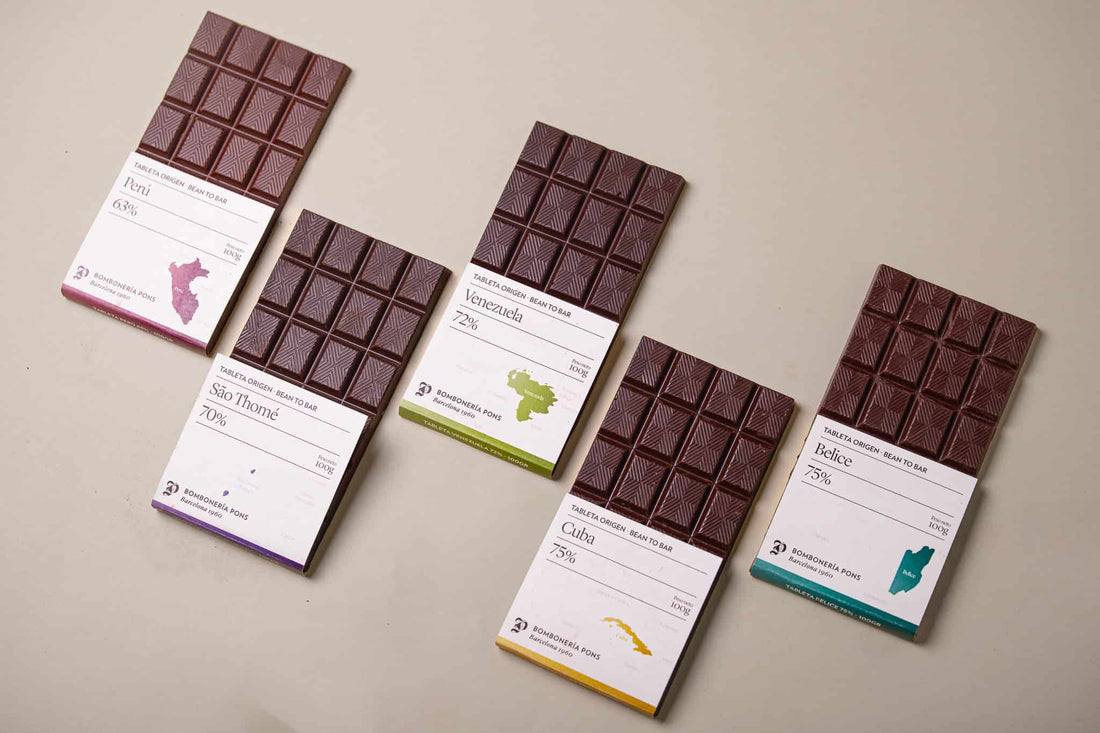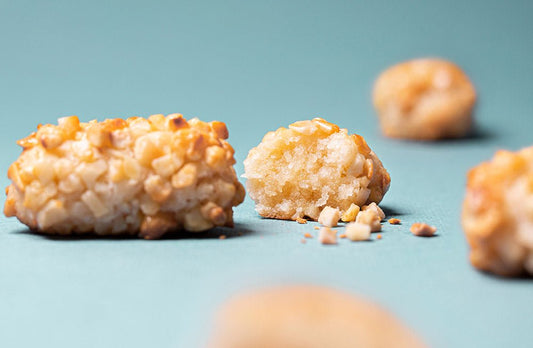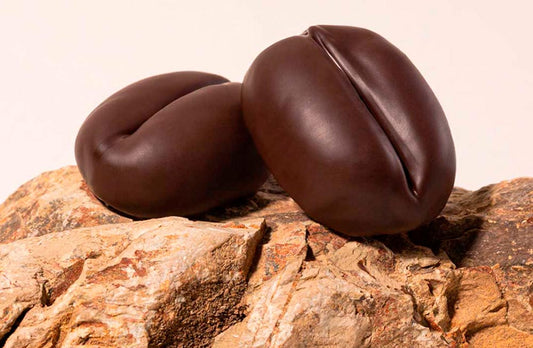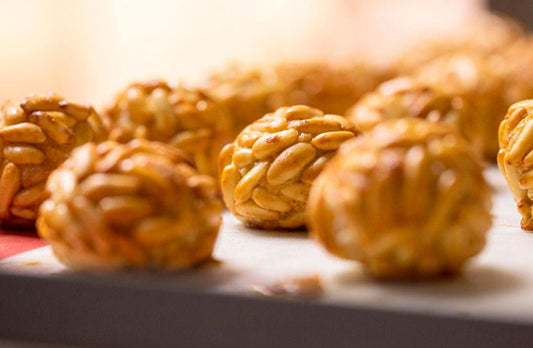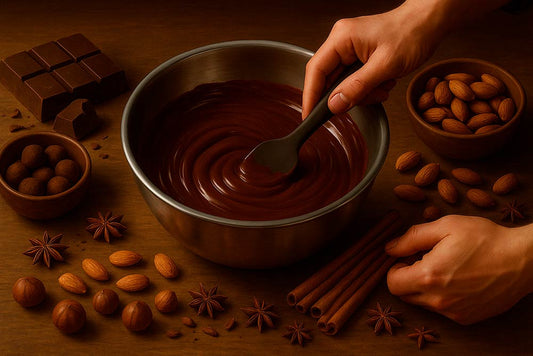How to Store Chocolate: Complete Guide to Enjoying It Always Fresh
Cristina MolinerTable of Contents
- 1. Why Does Artisan Chocolate Last Longer Than Conventional Chocolate?
- 2. General Tips for Keeping Chocolate Fresh
- 2.1 The Best Temperature to Store Chocolate and Preserve Its Flavor
- 2.2 Where Should You Store Chocolate? The Ideal Place for Keeping It Fresh
- 2.3 Some common mistakes people make when storing chocolate include:
- 2.4 How Long Can Chocolate Last If It’s Stored Correctly?
- 2.5 The Influence of Humidity on Chocolate Preservation
- 2.6 How to Store Chocolate According to the Season
- 2.7 Conclusion: Enjoy Your Artisan Chocolate As If It Were the First Day
Why Does Artisan Chocolate Last Longer Than Conventional Chocolate?
Chocolate is one of the greatest pleasures we can enjoy, but to make the most of it, it’s essential to know how to store it properly. Whether it’s artisan or commercial chocolate, how we store it directly affects its flavor, texture, and shelf life. If you want to enjoy your chocolate for longer and make sure it keeps its qualities, follow this complete guide on how to store chocolate.
Artisan chocolate, like the kind we make at home or buy from small producers, has a clear advantage: its freshness and the quality of the ingredients. Unlike industrial chocolate, which often contains preservatives and emulsifiers, artisan chocolate has fewer additives. This means that, although its shelf life may initially seem shorter, if stored correctly, it can last much longer without losing its qualities.
The key to the durability of artisan chocolate lies in how it’s handled during production and how it’s stored afterward. The absence of artificial ingredients, combined with proper storage, makes artisan chocolate not only delicious but also longer-lasting.
General Tips for Keeping Chocolate Fresh
Keeping chocolate fresh isn’t complicated, but it does require attention to a few details. To maintain its freshness and flavor for longer, I recommend following these basic tips:
Avoid exposure to direct light: Light can affect the flavor of chocolate, especially high-quality chocolate. Store chocolate in a dark place to preserve its flavor.
Don’t store it near strong odors: Chocolate can absorb odors from its surroundings. Make sure it’s kept away from spices, cleaning products, or foods with intense smells.
Keep the temperature consistent: Chocolate should be stored in a cool, dry place. If the temperature fluctuates, it can affect the texture, and in the worst case, it can melt and then solidify with white spots.
The Best Temperature to Store Chocolate and Preserve Its Flavor
Chocolate should be kept at temperatures between 15°C and 18°C (59°F and 64°F). At this temperature, the chocolate retains its smooth texture and intact flavor. Avoid storing it in warm places or near heat sources like radiators, stoves, or sunny windows, as excessive heat can melt it and change its consistency.
On the other hand, temperatures that are too low, such as you find in a fridge, can cause the chocolate to harden and become grainy, and may also absorb odors from other foods.
Where Should You Store Chocolate? The Ideal Place for Keeping It Fresh
The best place to keep chocolate is in a cupboard or pantry. Make sure it’s somewhere dry, cool, and dark. Avoid storing it near the oven, microwave, or anywhere the temperature might rise.
If you live in a warm climate, consider using an airtight box to protect it from moisture and temperature changes. If the chocolate is particularly delicate or fine, a location with stable temperatures is essential to preserve its qualities.
Some common mistakes people make when storing chocolate include:
Storing it in the fridge: Even though it might seem like an option, extreme cold can alter the texture and flavor of chocolate. Only keep it in the fridge if you live in an extremely hot climate and there’s no other option.
Exposing it to sudden temperature changes: When chocolate heats up and cools down quickly, it can turn dull and develop white spots due to cocoa butter separating, which affects the flavor.
Storing it in non-airtight containers: Without proper protection from air, chocolate can lose its aromas and absorb unwanted smells. Always use an airtight container.
How Long Can Chocolate Last If It’s Stored Correctly?
If stored properly, chocolate can last six months or more without losing its properties. Artisan chocolate, thanks to its pure, natural ingredients, can stay in good condition for several months if you follow the golden rule: store it in a cool, dark, dry place.
Although its shelf life may vary depending on specific ingredients, it’s important to remember that chocolate doesn’t spoil quickly. In most cases, both taste and texture remain perfect if stored correctly.
The Influence of Humidity on Chocolate Preservation
Humidity is one of chocolate’s main enemies. Moisture can make chocolate lose its shine and, over time, form white spots known as “cocoa bloom.” This phenomenon occurs when crystals of sugar or cocoa butter rise to the surface of the chocolate due to exposure to moisture.
To avoid humidity, it’s crucial to keep chocolate in a dry place. Avoid storing it in places like the kitchen, especially near the sink, where humidity is higher.
How to Store Chocolate According to the Season
The season of the year also plays an important role in how to store chocolate. In hot weather, chocolate is more likely to melt or absorb moisture. If you live in a warm climate, it’s a good idea to use an airtight container, or even keep it in an insulated cabinet to protect it from extreme temperatures.
In winter, chocolate can become more brittle, so make sure it isn’t exposed to extremely low temperatures. On the other hand, chocolate isn’t at risk of melting during this season if it’s well stored.
Conclusion: Enjoy Your Artisan Chocolate As If It Were the First Day
Storing chocolate properly isn’t hard, but it does take attention to detail. Keeping it in a cool, dark, dry place and avoiding temperature fluctuations ensures you’ll be able to enjoy it at its best for a long time.
And when it comes to artisan chocolate, the key is to respect its pure and delicate nature. If you follow these tips, your chocolate will stay fresh, flavorful, and with the quality that captivated you with the very first bite.
